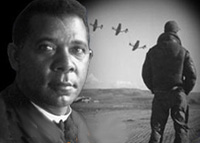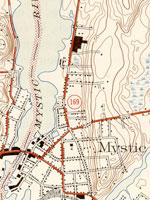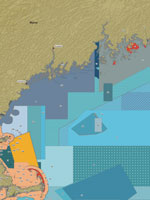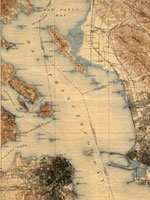IWitness (Video Editing Tools)
Watch a short introduction to using the site. Before beginning work on a video project, watch a video on ethical editing.
Watch a short introduction to using the site. Before beginning work on a video project, watch a video on ethical editing.
According to the SpyCast website:
"Today Peter converses with Dino Brugioni, a pioneer of the art of photo interpretation and a living legend of the US Intelligence Community. Dino shares his personal experiences briefing Presidents and describes the role that he and overhead photography played in such seminal Cold War events as the 'missile gap' and the Cuban Missile Crisis. Dino Brugioni has looked inside the most secret places on earth…from above."
According to the SpyCast website:
"During the Korean War, US military intelligence worked with anti-communist Korean agents and partisans to collect information from behind North Korean lines. SPY Historian Mark Stout interviews Colonel Douglas Dillard, USA (Ret.) who led AVIARY operations, the airborne insertion of the agents and partisans, and Mr. James M. H. Lee, a native of North Korea, who worked at his side as an interpreter. Learn what it was like flying at night over North Korea in a blacked out plane and hear about the courage of the Korean volunteers who parachuted into the dark, many of them never to return."
According to the SpyCast website:
"SPY Historian Mark Stout explores the importance of signals intelligence (SIGINT) to the Vietnam War with retired National Security Agency cryptanalyst Tom Glenn. Glenn served more time in country than any other civilian of the NSA. Hear about the sixth sense that good SIGINTers need to have, the difficulties of working in foreign languages, and how Glenn and his colleagues were able to predict every major Communist offensive. Learn also why American commanders did not always believe them. Finally, hear the wrenching story of Glenn’s last days in Saigon in 1975 as the city was falling to the North Vietnamese Army."
According to the SpyCast website:
"During the Vietnam War, perhaps the US Army’s most secretive unit was the Studies and Observations Group (SOG). This unit conducted reconnaissance missions, captured enemy prisoners for interrogation and rescued American POWs. It also ran teams of clandestine agents, and conducted psychological operations. The leader of this group in the mid-1960s was a legendary Army officer, Donald Blackburn. Listen to author Mike Guardia describe Blackburn’s colorful life in this event which took place on 16 February 2012."

Historical aspects of many of the 384 areas under the National Park Service's stewardship are presented in this expansive site. A "Links to the Past" section contains more than 25 text and picture presentations on such diverse history-related topics as archeology, architecture, cultural groups and landscapes, historic buildings, and military history. Of particular interest to teachers, a section entitled "Teaching with Historic Places" features more than 60 lesson plans designed "to enliven the teaching of history, social studies, geography, civics, and other subjects" by incorporating National Register of Historic Places into educational explorations of historic subjects. Examples include an early rice plantation in South Carolina; the lives of turn-of-the-century immigrant cigar makers near Tampa, Florida; a contrast between the Indianapolis headquarters of African-American businesswoman Madam C. J. Walker and a small store in Kemmerer, Wyoming, that grew into the J. C. Penney Company, the first nationwide department store chain; the Civil War Andersonville prisoner of war camp; President John F. Kennedy's birthplace; the Liberty Bell; Finnish log cabins in Iowa; and the Massachusetts Bay Colony's Saugus Iron Works. Especially useful for teachers interested in connecting the study of history with historic sites.

Presents a narrative in exhibit format—with hyperlinks to archival documents and photographs—on the cultural and economic life of the people who came to the Central Illinois River region from 1875 to 1950. Organized into three sections on the harvesting of fish, waterfowl, mussels, and natural ice; transportation by boat, railroad, and plank roads; and the settlement and development of six area river towns. The site delivers oral histories (audio and video), as well as illustrations and photographs. It may serve as a useful introduction to those studying this particular region and regional history in general.

A collection of more than 1,100 topographical maps created by the United States Geological Survey from the 1890s to the 1950s covering all of New England—Maine, New Hampshire, Vermont, Rhode Island, Massachusetts, and Connecticut—and selected areas of New York. The maps—which reveal roads, buildings, rail lines, bodies of water, and elevations—occur in 15-minute and 7.5-minute quadrangle series (a minute is one-sixtieth of a degree of latitude or longitude). In addition, the collection includes six maps with 30-minute quadrangles.
For states other than New York, users can view a state image map and select a point within a grid marked off in 15-minute increments to find listings for available images accompanied by dates the maps were surveyed, created, and revised. Towns within each quadrangle are also listed along with names of adjacent areas. Users also may search an alphabetical list of towns within each state. For New York, only an index of quadrangles names is available. Maps are presented in JPEG format. According to the site, "Each image is typically 2 megabytes, so download times are likely to be slow." A useful site for those studying changes in the New England landscape during the first half of the 20th century.

This specialized site contains more than 6,000 digitized maps. Almost 700 are maps of California, most drawn in the mid-19th century. California map results can be sorted according to users' needs. More than 5,330 maps (primarily from the 19th and 20th centuries) cover other parts of the world, including Portugal, Kenya, Hong Kong, Iraq, and hundreds of other nations or territories. Non-California search results cannot be sorted. Many of the maps are archived by the University of California, Berkeley, but some are accessible by links to other sites.
The maps are extremely high quality, so loading the images may take some time, especially with slower connections. The maps include information about the date and author. The site is difficult to navigate and the search engine is finicky, but the site should be useful to those interested in high-quality maps, especially older ones. This site will be most useful for those who are looking for specific maps.

Provides historical United States Geological Survey maps of the San Francisco Bay area, from Point Reyes in the north to Half Moon Bay, and east to San Jose. Includes maps from different time periods—the earliest is from 1895, the latest 1997—covering each 7.5-minute and 15-minute quadrangle of the area. Users may zoom in to see minute details. Searchable by quadrangle or place name. Of value for those studying change over time in the development of the Bay Area during the 20th century.